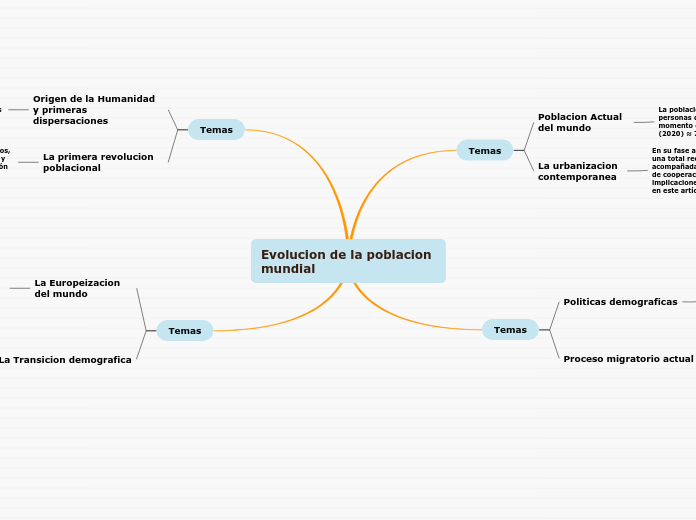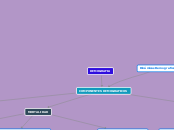Evolucion de la poblacion mundial
Rivers have always been essential for human life and settlement. A source for drinking, the source of food, and a way to transfer goods from one place to another. They are essential in the environment of rainforest and wetlands.
The Yangtze holds the title of Asia’s longest river. The Yangtze has a momentous place in China’s history and culture, providing some of the country’s most fertile land as well as some of its most artistically inspiring scenery.
Where the Mekong river runs, the land is incredibly verdant shaping one of the richest areas of biodiversity on the planet. Thousands of species call its shores and waters home. Long an essential trade route the Mekong passes through, or close to, some of the region’s most important cities, including Vientiane, Phnom Penh and Saigon.
La Transicion demografica
The Mekong is a trans-boundary river in Southeast Asia. Its estimated length is 4,350 km.
From the Tibetan Plateau, the river runs through China's Yunnan Province, Myanmar, Laos, Thailand, Cambodia, and Vietnam.
The Mekong rises as the Za Qu and soon becomes known as the Lancang (Lantsang) in the 'Three Rivers Source Area' on the Tibetan Plateau in the Sanjiangyuan National Nature Reserve. It approaches and empties into the sea through the Mekong Delta. Tributaries: Nam Khan, Tha, Nam Ou, Mun, Tonle Sap, Kok, Ruak.
La transición demográfica es una teoría demográfica que explicaría el paso a la tecnología de un régimen demográfico preindustrial, presidido por altas tasas de mortalidad y natalidad, a otro industrial con un fuerte
The Mekong basin is one of the richest areas of biodiversity in the world which is only surpassed by the Amazon?
Search for other interesting facts about this river and add them here.
Fase de Crecimiento Cero
Fase 4: Régimen demográfico moderno
Fase 3: Final de la transición
Fase 2: Comienzo de la transición
Fase 1: Antiguo régimen demográfico
La Europeizacion del mundo
The Yangtze or Yangzi is the longest river in Asia and the longest in the world to flow entirely within one country (Qinghai, Tibet, Yunnan, Sichuan, Chongqing, Hubei, Hunan, Jiangxi, Anhui, Jiangsu, Shanghai provinces). It rises in the northern part of the Tibetan Plateau and flows 6,300 km in a generally easterly direction to the East China Sea.
Tributaries: Yalong, Min, Tuo, Jialing, Han, Wu, Yuan, Zi, Xiang, Gan, Huangpu.
In mid-2014, the Chinese government announced it was building a multi-tier transport network, comprising railways, roads, and airports, to create a new economic belt alongside the river.
La Europeización o europanización se refiere a un número de fenómenos sociales y culturales relacionados con cambio dentro de un proceso de asimilación cultural en cuyo centro se encuentra la cultura europea como patrón dominante
The grain produced in the Yangtze River Basin, 70% of which is rice, is enough for half of the nation?
Search for other interesting facts about this river and add them here.
The Volga is the longest river in Europe. The waters of the Volga are used to irrigate the steppe regions of southern Russia. Because of its importance in the country, the Volga has mythological status in Russia, and many iconic sites are found along its banks
The Danube is the second-longest river in Europe. Travelers can experience many of the river's sights by embarking on a cruise along its waterways. Danube River Cruises, which are offered by Viking Cruises, typically stop in Cologne, Budapest, Nuremberg, Belgrade and Krems. Following the river is a way to experience several Eastern European cities in one trip. Famous monuments, such as the Hungarian Parliament, have been erected on its coast.
La primera revolucion poblacional
The Danube is located in Central and Eastern Europe.
The Danube flows through 10 countries, more than any other river in the world. Originating in the Black Forest in Germany, the Danube flows southeast for 2,850 km, passing through or bordering Austria, Slovakia, Hungary, Croatia, Serbia, Romania, Bulgaria, Moldova and Ukraine before draining into the Black Sea. The mouth of the Danube is the Danube Delta. The greater part of the Danube Delta lies in Romania, with a small part in Ukraine (Odessa Oblast).
Tributaries :Iller, Lech, Altmühl, Naab, Regen, Isar, Inn, Ilz, Enns, Morava, Rába, Váh, Hron, Ipeľ, Sió, Dráva, Vuka, Tisza, Sava, Tamiš, Great Morava, Mlava, Karaş, Jiu, Iskar, Olt, Osam, Argeș, Ialomița, Siret, Prut.
Fue La revolución neolítica, hace diez mil años, mediante la aplicación de técnicas agrícolas y ganaderas permitió la primera gran expansión de la especie humana
The Danube is the source of drinking water for almost 10 million people?
Search for other interesting facts about this river and add them here.
Origen de la Humanidad y primeras dispersaciones
The Volga is the longest river in Europe with a catchment area of 1,350,000 square km.
Eleven of the twenty largest cities of Russia, including the capital, Moscow, are located in the Volga's drainage basin. Rising in the Valdai Hills 225 meters above sea level northwest of Moscow and about 320 km southeast of Saint Petersburg, the Volga heads east past Lake Sterzh, Tver, Dubna, Rybinsk, Yaroslavl, Nizhny Novgorod, and Kazan. From there it turns south, flows past Ulyanovsk, Tolyatti, Samara, Saratov, and Volgograd, and discharges into the Caspian Sea.
Tributaries: Kama, Oka, Vetluga, and Sura. The Volga Delta has a length of about 160 kilometers and includes as many as 500 channels and smaller rivers.
Ya que los humanos modernos se habrían originado en el África negra en un período entre los 140 000 y 250 000 años, el momento crucial de expansión de los humanos modernos implicaría una o más migraciones desde África hacia el continente asiático hace unos 65 000 años.
The Volga freezes for most of its length during three months each year.
Search for other interesting facts about this river and add them here.
There are four major rivers in Africa: the Nile, the Zambezi, the Congo, and the Niger. The Nile is one of the longest rivers in the world.
The Zambezi's most noted feature is Victoria Falls. Other notable falls include the Chavuma Falls at the border between Zambia and Angola, and Ngonye Falls, near Sioma in Western Zambia.
Proceso migratorio actual
The Zambezi is the fourth-longest river in Africa and the largest flowing into the Indian Ocean from Africa. The area of its basin is 1,390,000 square km.
The 2,574-km-long river rises in Zambia and flows through eastern Angola, along the north-eastern border of Namibia and the northern border of Botswana, then along the border between Zambia and Zimbabwe to Mozambique, where it crosses the country to empty into the Indian Ocean.
Major tributaries: Chifumage River, Luena River, Kabompo River, Lungwebungu River, Luanginga River, Gwayi River, Sengwa River, Sanyati River, Kafue River, Luangwa River, Panhane River, Luia River.
Los procesos migratorios, o sea el trasladarse de las personas desde una zona a otra, desde un país a otro, desde un continente a otro, no en busca de diversión, no por viaje de placer, sino en búsqueda de mejores oportunidades laborales, de un mejor pasar, entre otros.
In 1498 Vasco da Gama became the first European to see the Zambezi River? He called it the 'River of Good Omens' ('Rio dos Bons Sinais').
Search for other interesting facts about this river and add them here.
Politicas demograficas
The Nile, which is about 6,650 km long, covers eleven countries: Tanzania, Uganda, Rwanda, Burundi, the Democratic Republic of the Congo, Kenya, Ethiopia, Eritrea, South Sudan, Republic of the Sudan and Egypt.
It has two major tributaries, the White Nile and the Blue Nile. The White Nile is the headwaters and primary stream of the Nile. The White Nile is longer and rises in the Great Lakes region of central Africa, with the most distant source still undetermined but located in either Rwanda or Burundi. The two rivers meet just north of the Sudanese capital of Khartoum.
The northern section of the river flows north almost entirely through the Sudanese desert to Egypt, then ends in a large delta and flows into the Mediterranean Sea.
Es la práctica de controlar intencionalmente la tasa de crecimiento de una población humana. Históricamente, la planificación de la población humana se ha implementado con el objetivo de aumentar la tasa de crecimiento de la población humana
The Nile Delta region is home to about 40 million people? That is half of Egypt's population.
Search for other interesting facts about this river and add them here.
Temas
North America
In the 18th century, the river was the primary western boundary of the young United States, and since the country's expansion westward, the Mississippi River has been widely considered a convenient dividing line between the Eastern, Southern, Midwestern United States, and the Western United States.
South America
Amazon River, the greatest river of South America and the largest drainage system in the world in terms of the volume of its flow and the area of its basin.
La urbanizacion contemporanea
Main tributaries - Marañón, Napo, Japurá/Caquetá, Rio Negro/Guainía, Putumayo, Trombetas, Ucayali, Javary, Juruá, Purús, Madeira, Tapajós, Xingu.
The Amazon and its tributaries flow through the countries of Peru, Bolivia, Venezuela, Colombia, Ecuador, and Brazil before emptying into the Atlantic Ocean 6, 437 km (4,000 miles) from the Amazon's headwaters high in the Andes mountains of Peru.
En su fase actual, la urbanización se basa en una total reorganización de la economía, y va acompañada de nuevos sistemas de gobierno, de cooperación y de competencia cuyas implicaciones para los habitantes se repasan en este artículo.
Although the Amazon is such an enormous river, there are no bridges to cross the river along its entire length?
Search for other interesting facts about this river and add them here.
Poblacion Actual del mundo
Its source is Lake Itasca in northern Minnesota and it flows generally south for 2,320 miles (3,730 km) to the Mississippi River Delta in the Gulf of Mexico.
The main stem is entirely within the United States. Tributaries - St. Croix River, Wisconsin River, Rock River, Illinois River, Kaskaskia River, Ohio River, Minnesota River, Des Moines River, Missouri River, White River, Arkansas River.
The river either borders or passes through the states of Minnesota, Wisconsin, Iowa, Illinois, Missouri, Kentucky, Tennessee, Arkansas, Mississippi, and Louisiana.
La población mundial es el número total de personas que viven en todo el mundo en un momento en específico (2020) ≈ 7625 millones de personas.
The name 'Mississippi' comes from 'misi-ziipi' in the Ojibwe language, which means 'Great River'?
Search for other interesting facts about this river and add them here.









